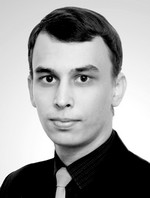Prioritising health improvement domain of physical education of youth
Фотографии:
ˑ:
Fizicheskaya kultura: vospitanie, obrazovanie, trenirovka №3-2017, pp.29-31
A.S. Gonashvili1
PhD, Associate Professor R.Kh. Salakhutdinovа1
T.N. Fedorova1
T.K. Petrushenko1
N.V. Klinetskaya1
1Saint Petersburg State University, St. Petersburg
Since the ongoing reforms of the national health system have failed to yield the expected health benefits as yet, an increasing priority is to be given to the alternative underage and teenage disease control and health improvement methods and projects.
Objective of the study was to prioritise and provide grounds for a new school physical education design concept viewed as one of the key factor and provision for the young people’s health protection and improvement process success. The growing attention to the health improvement, disease prevention and cultural aspects of the school physical education curricula is largely spurred by the negative trends in the underage and teenage people’s health reported for the last two decades. The national health statistics report only 10% of Russian senior pupils (16-18 years old) being tested healthy in fact.
For the study purposes, the authors mined and analysed the Russian national statistical data on the underage and teenage health situation for the period of 2011 to 2014. The special emphasis made by the researchers on the school physical education programs as one of the highly efficient disease prevention and sustainable health improvement mechanisms is due to the versatile positive effects of the modern physical education on the children’s health and the opportunities to cultivate healthy lifestyles in children under the school health curricula – with due emphasis on the values, ethical aspects and basics of the healthy lifestyles. The lessons should be designed to attain a few clearly specified social goals including the cultural, educational, health improvement ones etc. A few national and foreign school education practices showed great potential benefits of such education models.
Keywords: health, physical education, self-protective behaviour, students.
References
- Analiticheskie materialy o Polozhenii Detey v Sankt-Peterburge. 2012 god. [Analytical materials on the Situation with Children in St. Petersburg. 2012]. St. Petersburg. Committee for Social Policy of St. Petersburg, 2013. Available at: http://www.homekid.ru/kidinspb2012/index.htm (Accessed: 18.09.2013).
- Bespalko V.P. Slagaemye pedagogicheskoy tekhnologii [Components of educational technology]. Moscow, 1989, 192 p.
- Vasilyev O.S. Voprosy korrektsii narusheniya osanki [Issues of correction of fault in posture]. Fizkultura v profilaktike, lechenii i reabilitatsii, 2007, no. 4, pp. 57- 61.
- Gomzikova S. Bolnaya na dve treti natsiya [Two-thirds sick nation]. Svobodnaya pressa. October 5 2013. Available at: http://svpressa.ru/society/article/75264/?vkb (Accessed: 08.10.2013).
- Demchenkova G.Z. Nekotorye pokazateli zdorovya i printsipy formirovaniya zdorovogo obraza zhizni molodezhi [Some health indicators and healthy lifestyle cultivating principles among youth]. Mater. nauch-prakt. konf. "Zdorovy obraz zhizni podrastayuschego pokoleniya" [Proc. res.-pract, conf. "Healthy lifestyle of younger generation"]. St. Petersburg, 1999, pp. 128.
- Zdravookhranenie v Rossii 2015. Stat. sb. [Public health in Russia 2015. Stat. col.]. Rosstat. Moscow, Z-46, 2015, 174 p.
- Lukina G.G. Trebovaniya k innovatsionnym tekhnologiyam s pozitsii ozdorovleniya detey [Requirements for innovative technologies in context of children's health improvement]. Sb. mater. Vseros. nauch.-prakt. konf. "Aktualnye problemy razvitiya fitnesa v Rossii" [Proc. All-Rus. res.-pract. conf. "Actual problems of fitness development in Russia"]. St. Petersburg: Herzen RSPU, 2009, pp. 163-168.
- Salakhutdinova R.Kh. Sotsialnoe zdorovye kak obyekt sotsiologicheskogo issledovaniya: voprosy metodologii [Social health as an object of sociological research: methodological issues]. Vestnik SPbGU. Ser. 12. 2011. No. 3, pp. 263-271.



 Журнал "THEORY AND PRACTICE
Журнал "THEORY AND PRACTICE